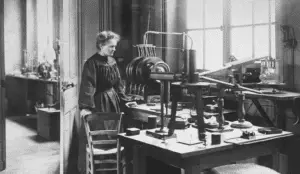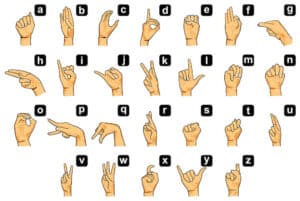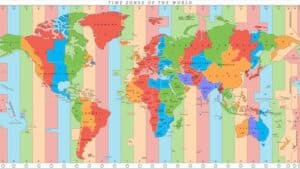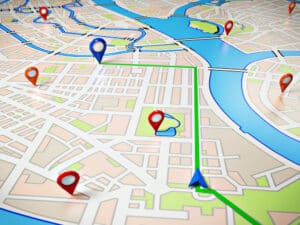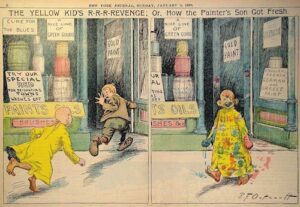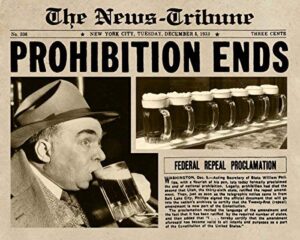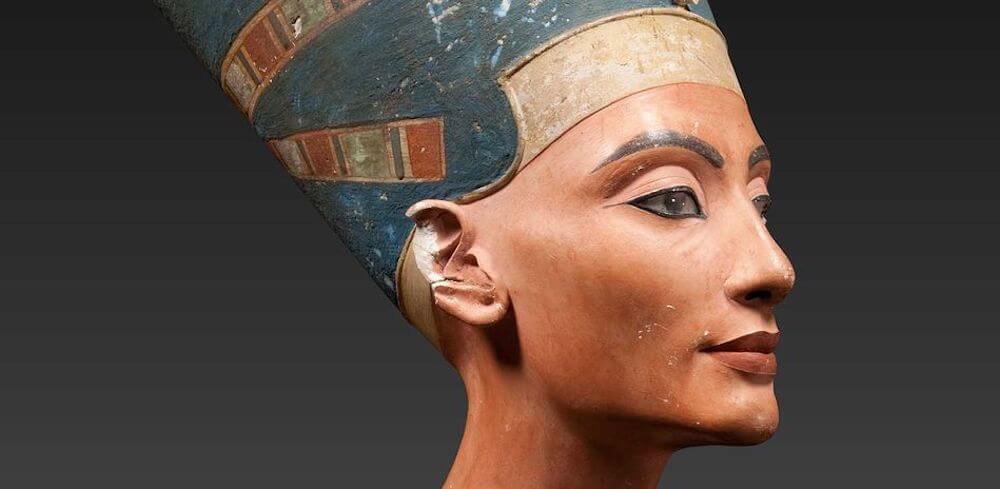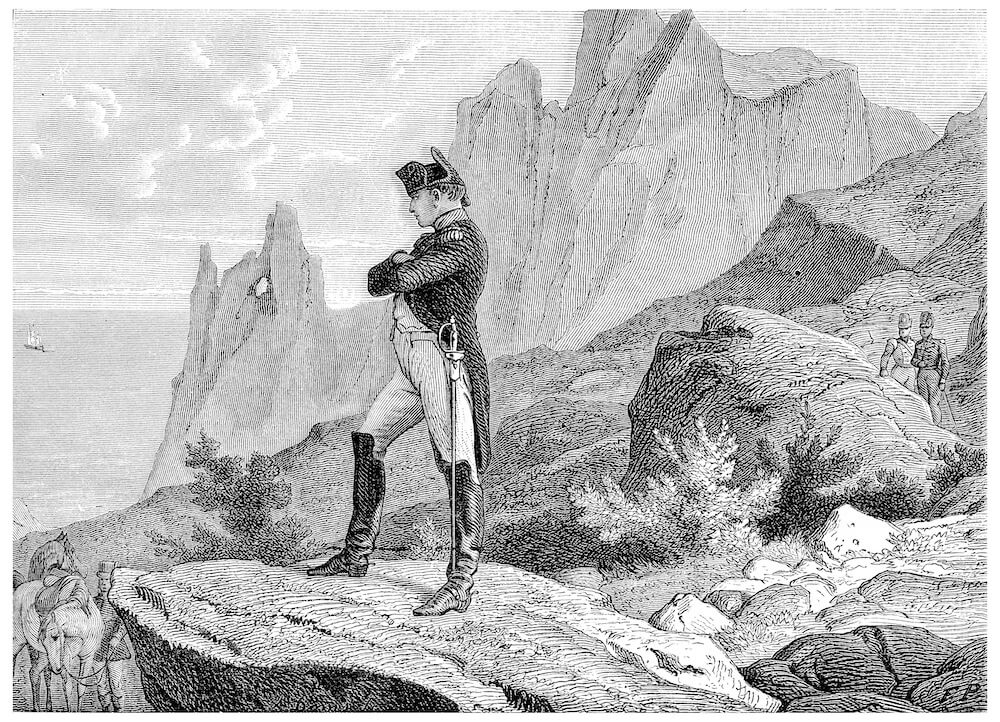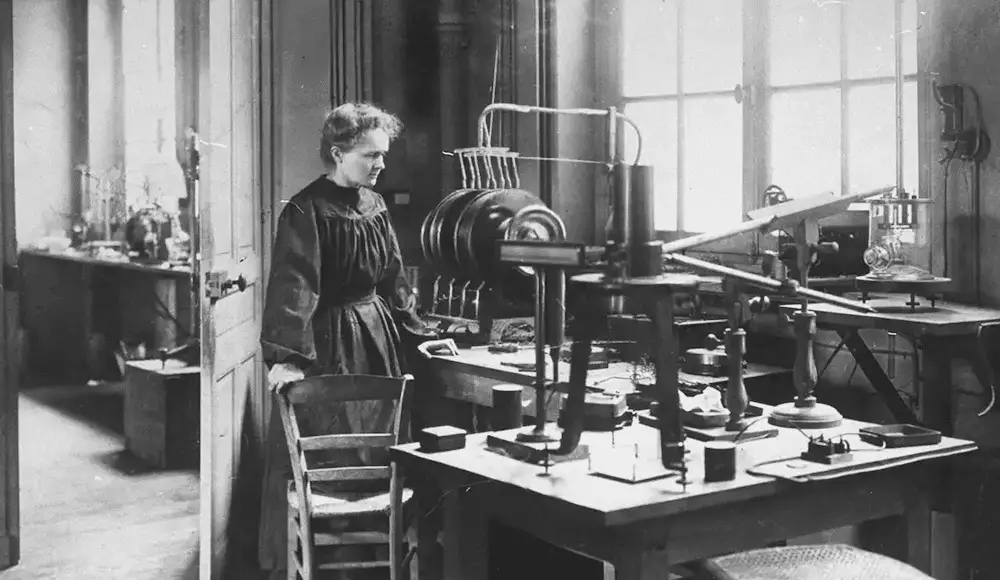How did Hitler rise to power?
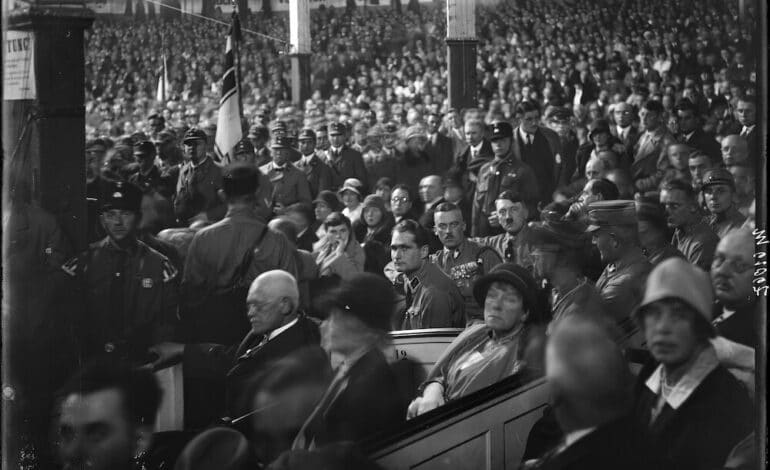
First, let’s make some things clear. No amount of contextual analysis can downplay Hitler’s evil legacy: the catastrophe of World War II, which he started, and the atrocities committed in the name of his ideology. When we try to understand why all of this happened, it pretty much comes down to probably the most hated man in history. So, how did Hitler rise to power?

However, there is no doubt that Hitler and the Nazis were born out of problems faced by the German people after World War I ended. Adolf Hitler was the leader of the party that took 33% of the votes during the November 1932 parliament elections which allowed him to negotiate his way into the post of Chancellor and quickly transform the country into a dictatorship.
What’s more, he didn’t even hide much: his plans and ideology were quite apparent from the start. So how could a non-democratic politician legally “hack” democracy? Does it mean that the system is weak? Course block
Democracies can be highly robust, but many things went wrong for the young German democracy in the 1930s. In the political chaos, ideas of revenge and bringing back “German pride” thrived, especially among war veterans, the poorer, and the younger. In addition, the Great Depression hit the economy hard, creating a demand for “a stronger hand.”
However, it still didn’t guarantee Hitler the majority of votes. He cunningly used, manipulated, bribed, and bullied close-minded politicians while stacking up on people’s anger and fears. Using loopholes in the constitution, he took over unprecedented power. He then wielded this power to keep the opposition silent and dismantle the democratic procedures, which brought him there in the first place.
Sadly, we all know how it ended, with more than seventy million dead only in WWII, as well as about six million Jewish people and millions of other victims in the Holocaust.
Notably, the story of Hitler’s rise to power started with revenge and bigotry. Perhaps, we ought to examine his path to power—as even mature democracies can sometimes learn from it to avoid bitter mistakes.
What happened to Germany after World War I?
In late 1918, the situation on the frontline was dire for the German empire, but the Kaiser and the generals were still eager to fight.

However, with many dead and wounded and the economy in ruins (the pandemic of the Spanish Flu didn’t help either), people and soldiers had enough. So when the Navy command ordered the last stand battle against the vastly bigger UK fleets, the sailors in the port of Kiel revolted on October 29th. Quite soon, the revolution spread over the whole country. The Kaiser fled, and the military surrendered.
And then, chaos ensued. The Allied countries (France, the US, and the UK) said they would sign a formal peace treaty when Germany established a new national government. Friedrich Ebert, the leader of the Social Democratic Party, was in a rush to find a compromise with other politicians to adopt a new constitution. Meanwhile, Anarchists and Communists declared they would not resort to political talk to give power to the rich again.
The Social Democrats didn’t want to proclaim a Communist state the same way it happened in Russia a year before. So to quell the potential Communist uprising, Ebert turned to a nationalist paramilitary organization—Freikorps, granting them significant autonomy. When in January of 1919 the Communists organized a national strike (called the Spartacist uprising), Freikorps responded by shooting, killing, and beating the most prominent Communist leaders.

The divide and bitterness among the left (with Social democrats essentially allowing the conservatives to kill Communists) would carry on, making it easier for Hitler and the Nazis in the long run. In the post-war chaos, the sides were quite aggressive and unwilling to compromise. Course block
In the meantime, the diplomats of the victorious nations gathered at Versailles Palace near Paris, signing a peace treaty with Germany. This treaty put the whole responsibility and burden of post-war rebuilding on Germany and its allies. Thus, Germans had to relinquish part of their territories, reduce the army and fleet significantly, and pay massive reparations over the next 15 years. They had no way of opting out or protesting.

After losing the war, Germany was believed to be humiliated: its economy was in ruins, the army, for the most part, disbanded, and people exhausted from the hostilities and the internal revolutionary struggles. To make things worse, several more attempts at both right-wing and left-wing uprisings would occur in 1919 and 1920.
Nevertheless, the new democratic government managed to call general elections and pass a new constitution. And in these turbulent times, Germany became a representative parliamentary republic.
Unfortunately, democracy didn’t have many fans. Political parties, both right and left, were inciting the people to get votes, while many people were blaming the new regime for all the bad things happening to the country. At the same time, people remembered the monarchy for pre-war “peace and prosperity.” From late 1918 to 1933 (until Hitler came to power), this German state would be known as the Weimar republic—referring to the city of Weimar, where the constitutional assembly first took place. However, it was never called like that officially—people started using the name only afterward.
At these times, Adolf Hitler, a lower-rank war veteran from Austria and a holder of the Iron Cross, returned from the war to Munich, the capital of Bavaria, Germany’s largest federal state. Not having any formal education or meaningful career opportunities (his earlier attempts to become an artist were largely unsuccessful), he chose to remain in the military. His task in intelligence was to infiltrate the German Workers’ Party (DAP, Deutsche Arbeiterpartei)—a right-wing group spreading conspiracy theories.
Next up, we’ll discover: How did Hitler and the Nazi party gain so many votes in elections that allowed him to get an unprecedented power? What was the state of German society at the time that it believed Hitler and voted for him? Was it a defeat for democracy?
How did Hitler become popular?
Historians and political scientists still debate whether Hitler was an antisemite before the war or caught on to the conspiracy theories afterward. Whichever the case, the party he infiltrated at the behest of the military was impressed with his rhetorical skill, and he eventually rose to a leading position in 1923.

By that time, Hitler mostly spent his days at beer halls and public venues of Munich, making speeches to their target audience—disgruntled youth and war veterans, being a war veteran himself.

To gain more popularity and draw both right-wing and left-wing electorate, Hitler renamed the party to National Socialist German Workers’ Party (Nationalsozialistische Deutsche Arbeiterpartei, NSDAP), although he hated socialism.
Hitler didn’t invent any of the conspiracy theories he was spreading at the time: he built his rhetoric on many popular resentments. One of such things was the “stab-in-the-back myth.”
According to it, Germany was allegedly winning the war in 1918, but civilian negligence, leniency, and whimsical desire to end the war crippled the army. Then, as the myth goes on, the Communists started their revolution precisely when the German army was weak and needed backup.

Another source of harboring public disappointment was the Treaty of Versailles: the far-right spread the belief that the government was quick to sign off to a humiliating defeat, “betraying the nation.” For that, the Jews were blamed, thus fueling the antisemitic movements.
This belief did not hold to plain logic. Still, it fell on the fertile ground of xenophobic hysteria and fear. Course block
In 1922, a Fascist party led by Benito Mussolini came to power in Italy, sharing a similar political program and ideologies. Hitler observed their tactics and symbols and adopted similar ones.

For instance, he borrowed the Fascist salute—a straight right hand above one’s head, which was believed to mimic an ancient Roman greeting.
Following the example of Italian Fascists, the NSDAP created a subordinate organization: a paramilitary group Sturmabteilung (SA), that consisted of young, fit, and primarily jobless men. The SA thugs readily engaged in physical fights with political opponents in Munich’s streets and beer halls. To create the feeling of shared identity, the Fascist paramilitaries wore black shirts; in turn, the German Nazis favored brown.

The SS, which later oversaw the concentration camps and the execution of the Holocaust, started as a small unit of Hitler’s personal guards within the SA.
Mussolini didn’t wait until the democratic majority elected him—he just took over the government by force. So, Hitler decided that the Nazis in Germany had to do the same.
In 1923, Germany ran out of money to pay out for another round of reparations. In response, France and Belgium occupied the industrial region of Ruhr Valley, and a state of emergency was declared. The government decided to print more money, and severe hyperinflation hit the German economy. The currency inflation was so massive that money lost its value in a matter of days. For example, at the end of 1922, a loaf of bread in Berlin was worth 160 Marks; by late 1923, the price was 200 000 000 000 Marks.
Hitler decided to occupy the central public building in Munich, expecting that the Bavarian government would ally with them and start a march on Berlin. Hitler delivered plenty of speeches telling people that there was a grand conspiracy that plans to erase Germany from the face of Earth.

Two thousand NSDAP and SA members marched through the central street of Munich to take over the main square and public offices. Police confronted them: sixteen Nazis and four police officers were killed. Hitler got wounded and fled to the countryside but was found in two days. The event was dubbed the Beer Hall Putsch by journalists and then historians.
The organizers of the putsch were arrested and put on public trial. In addition, the authorities banned the NSDAP and the Nazi newspapers. Hitler received five years of prison for high treason.

However, the judge was sympathetic to Hitler, and the press publicized the trial widely, documenting every Hitler’s speech and argument. As he moderated his tone and concealed his usual antisemitism, many people could still relate with his sadness over German destitution, his plea to redraw the Versailles Treaty, and a longing for unified leadership instead of incompetent parliaments. It was the first time the Nazi agenda rose to the national level.
How did Hitler enter parliamentary politics?
In prison, Hitler had an abundance of spare time to think over the Nazi political program and tactics. As Beer Hall putsch showed, the failure to overthrow the government by force would mean a total ban and the end of the party—so he sought a legitimate way to win elections.
With his cellmates, Hitler developed his ideology further. Later it will be published as Mein Kampf, his manifesto.

He took the usual conspiracy theories several steps further, claiming that Germans were a “superior race,” directly descended from “the ancient Aryans,” and some of the other nations—like Jews—were “detestable.” “Aryans” was the name ancient Indo-Iranians called themselves. They were ancestors of many nations in Europe and Asia.
Released in just eight months in an amnesty, Hitler managed to get the ban on the Nazi party and newspapers dropped. But while Hitler was in prison, Germany had found long-sought stability, and the politics calmed down. The government negotiated a compelling deal, receiving loans from the US banks to recover and meet the reparations payments, and the parliament’s coalition was working effectively on law-making.
Hitler understood that the Nazi ideology had to permeate every aspect of civil life and be familiar to every German citizen. So the NSDAP established several organizations and social causes: for example, Hitlerjugend (Hitler Youth) as a scout organization for young boys. They made alliances and partnerships with prominent business owners and politicians. They organized massive marches with torches, chanting belligerent hymns and using up aesthetics of medieval German folklore.

Despite their best efforts to utilize the widespread post-war desire to “make Germany great again,” the NSDAP came only ninth in the 1928 elections, securing only 12 seats in the national parliament out of 491. After that, Hitler realized they needed more radicalization and impressive shows.
SA units engaged in street clashes with the Communist paramilitary organizations, insinuating that Communists were secretly working underground to overthrow the German nation. Meanwhile, the Nazis put a lot of effort and resources into a referendum to denunciate the Versailles treaty, which turned national attention to their political program.
Then, a momentous event happened. In October 1929, Wall Street crashed: the Great Depression shook the world. American banks stopped giving loans, and the global economic downturn led to even worse effects for the recovering German economy. The farmers, workers, and small shop owners again lost all their savings once again. The unemployment and the prices soared while salaries plummeted.
Hitler found a scapegoat: the “international Jewry,” the Western democracies, and the left-wing. He promised the most radical solutions to help “true German families regain their good old happiness and prosperity. In 1930, the Nazis came second in the election. Although the winners (the Social Democratic party) could still appoint the Chancellor and the cabinet, the parliament was at a constant standstill. The Nazis and the Communists came second and third—and they publicly announced they would not enter any coalitions. Remember the bitter events of the Spartacist Uprising of 1919? In 1930, some Communist newspapers had it that they would rather see the Nazis gaining power than take sides with social democrats and socialists again.
Though Paul von Hindenburg, the President of Germany, shared Hitler’s resentment over Germany’s status after WWI, he personally opposed the Nazis and Hitler. The business circles tried to persuade him to appoint Hitler as the Chancellor to end the impasse but to no avail.
In the next two years, Hitler would seize the long-sought power.
How did Hitler become Chancellor and rise to power?
Hitler traveled over the nation by plane, visited rallies and torch-lit parades, delivered his aggressive and contagious speeches. The Nazi paramilitaries, backed by unemployed and young volunteers, clashed with the Communists in the streets and destroyed shops owned by the Jews. As unemployment and poverty rose, more Germans gave in to hatred.
In April 1932, Hitler ran for President, competing with his nemesis Hindenburg, who previously denied the Nazis any governmental positions. Hitler lost the run-off round with 36.8 to 53%—but now he commanded national attention as the primary opposition.

Following the presidential elections, the government banned the Nazi paramilitaries. Later that year, in July, the NSDAP gained 37.2% of the votes in parliamentary elections. They became the largest party in the Reichstag but still failed to secure the majority.
Now an underdog in parliament, the Social Democrats still controlled the government. Promising cooperation on specific issues, Hitler demanded the ban on his “pocket armies” to be lifted. After Hindenburg relented, Hitler made another demand: as the leader of the largest party in the parliament, he should become Chancellor. When Hindenburg offered him only the position of vice-Chancellor, Hitler refused to play the “second fiddle.” Instead, he began to radicalize the public even more with his speeches and public actions. By that time, the NSDAP already had more than 800 000 members.
As the parliament was still blocked, the President announced re-election in November of 1932. The Nazis came first again but lost 35 seats. In need of more decisive action, Hitler consulted with influential industrialists and government officials to make Hindenburg appoint him Chancellor. In the talks with other politicians, he pretended that his antisemitic rhetoric was just a charade to gain votes.
In his speeches, Hitler emphasized the need to overcome unemployment, make even with Western democracies, terminate the Treaty of Versailles, and return Germany to its former military greatness. Eventually, the business circles convinced Hindenburg that parliament could not act against the Nazis, who had won the majority twice.

The large business owners were sure that Hitler would eventually solve Germany’s economic and political problems and that his radical rhetoric does not mean much. On the other hand, many skeptics—even among the Jews—were sure that Hitler was too dumb, weak, and short-sighted to last long as the Chancellor.
Finally, on January 30th, 1933, Hindenburg appointed Hitler the Chancellor of Germany. Thus, Hitler had the authority to form the government and implement government decisions.
How did Hitler overturn the rule of law?
By the time Hitler was appointed Chancellor, he already controlled the streets with his paramilitaries.

One month after he came to power, the Reichstag building caught fire on February 27th, 1933. Modern historians believe that the arson was a planned Nazi provocation to create a false pretext for a threat and bring about a state of emergency. A Dutch communist Marinus van der Lubbe was accused of the crime, tried, and executed. It took the German government nearly 75 years to grant a posthumous pardon to van der Lubbe.
Using this act as an excuse, Hitler convinced Hindenburg to pass an act that would outlaw most civil liberties—including the rights to dissent, assemble, protest, and be tried with due process in court. The act would also grant Hitler extraordinary powers, which he used to ban the Communist Party and imprison communist and labor union leaders in concentration camps.
In this atmosphere, Hitler still failed to secure the majority in the parliament after the elections of March 5th, 1933. With the Communists out of the way, he commanded only 43.9% of the votes. However, he managed to bribe and coerce just enough to pass the Enabling Act: the law that would grant Hitler powers to adopt and enforce laws without any consultations with the parliament or the President.

The Enabling Act of 1933 would become the legal basis for the totalitarian Nazi dictatorship. Hitler immediately used it to abolish other parties, close down the free media, and imprison any opponents in labor and concentration camps. Moreover, he purged his party to eliminate random and unreliable people and appointed proxies in the army and police. The purges culminated in the Night of the Long Knives—a series of unlawful arrests and killings in early July 1934. Historians estimate several hundred dead and thousands imprisoned. In his speech several weeks later, Hitler dubbed himself “the supreme administrator of justice of the German people.”
Shortly after seizing power, Hitler created the Ministry of Public Enlightenment and Propaganda, which effectively used radio broadcasts to scare the population with imaginary enemies and prove the rationality of the Nazis’ actions.
In August 1934, Hindenburg, who still had been commander-in-chief and head of state, died. Hitler appointed himself President, Chancellor and proclaimed himself Fuehrer of the state. He did not face any resistance, as the most potent political opposition and journalists were killed or imprisoned. Others saw Hitler as a “lesser evil,” willing to tolerate extremism temporarily for a better future. Meanwhile, German diplomats abroad found ways to convince other countries that the Nazi rule was actually a good thing for Germany and Europe.
One man found a legal loophole to upend the checks and balances system essential to any democracy. Hitler and his party ruled Germany with an iron grip.
Hitler’s rise is a chilling reminder of how power can be seized and abused. For more on influential rulers and political systems, read about why kings and queens still rule today, the enduring mystery of Queen Nefertiti, or five surprising facts about Napoleon’s path to power.
How did democracy die?
Hitler came to power as the winner of democratic elections. He then cunningly exploited the oversights of a hastily drawn constitution, concentrating the power in his hands and abolishing all democratic safeguards.
So how did it happen that people, other parties, politicians, and the President himself still allowed Hitler to become Fuhrer, which later led to millions of deaths and suffering?

- Victorious states of the First World War imposed an unbearable burden on the war-torn country. Residents of the defeated and humiliated country harbored revanchist feelings, seeing their army reduced and their money used to pay reparations.
- Democracy was born in a whirlpool of bloody clashes, chaos, and anarchy. Political parties failed to compromise. In the end, the parliament would have about 10–12 factions without anyone able to get the majority.
- Political infighting and the resentment following the defeat of their 1919 uprising prevented the radical left from opposing the real threat. Instead, the Communists, the Anarchists, and the Socialists wasted time on petty ideological disputes while extreme right-wing terrorists—the SA and the SS—seized control of the city streets, bypassing city officials and police.
- The Great Depression of 1929–1933 caused unprecedented economic distress around the world. It led Germany, which had just recovered from unbearable reparations and military devastation, to bankruptcy. The population descended into poverty, and unemployment reached almost 30%. The Nazis promised to make things right again, giving “real Germans” money, work, and support without spending it on “Jews, greedy Westerners, socialists, and communists.”
- Most probably, at some point, Hitler himself started to believe in the wacky conspiracies he spread. Hitler found fulfillment in radical and misanthropic ideas.
- Moreover, Hitler’s charisma and oratory skills led many people to sincerely believe him, seeing him as a messiah, miracle worker, or even a supernatural being.
- By skillfully manipulating connections in business and government offices, Hitler found a way to lead the government legally, without a coup. As he gained this power following the letter of the law, neither Western democracies nor the internal opposition could claim it was illegal.
- The terror perpetrated by the SA and the SS in the streets, and the effective propaganda in the media led by the “evil genius” of deception and manipulation, Joachim Goebbels, to some extent “zombified” people who were not ready for such modern technology. Radio broadcasts exposed people to a constant scare of an external threat: the imminent Soviet attack, the Jewish conspiracy, etc.
Historians are still debating which of these factors played the decisive part. But we can certainly say this: one of the European nations lost its democracy due to the cunning manipulation of its lawful procedures. As journalists laughed at the radical buffoon and the politicians sought to exploit his perceived weakness, the enemies of democracy laid the foundations of the Nazi empire.

